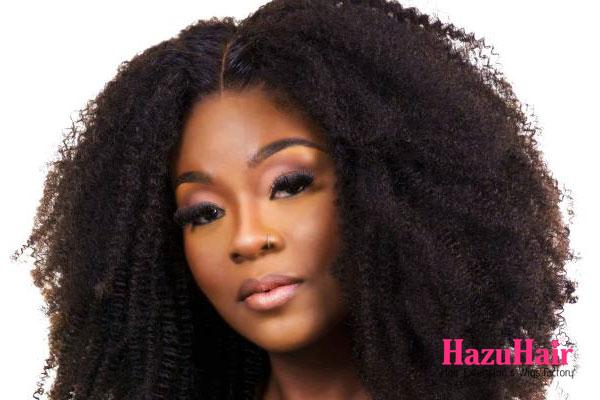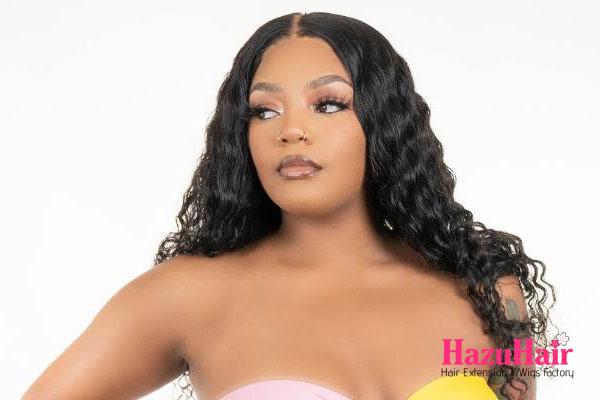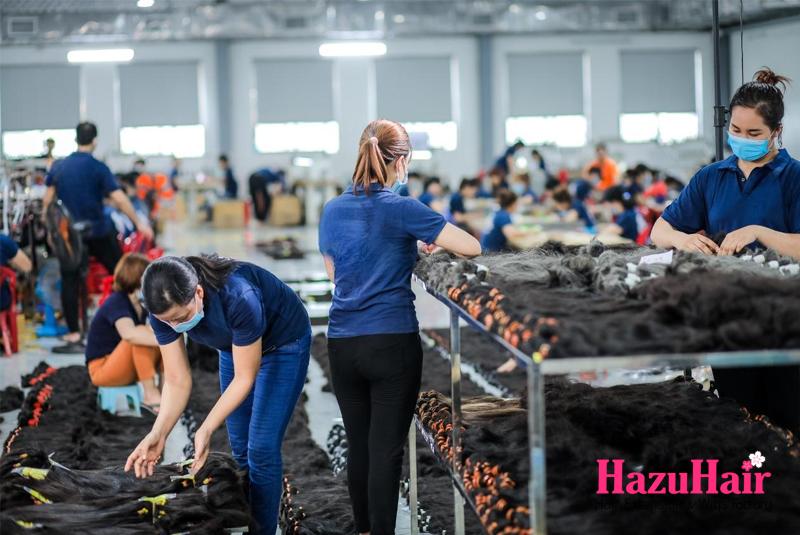Hair knowledge
Best Ways to Maintain Your Hair Underneath Your Wig
Wearing wigs is undoubtedly one of the best ways to protect your natural hair while rocking a stunning hairstyle. However, it’s easy to focus solely on achieving a beautiful look with wigs and forget the importance of caring for the natural hair underneath. Neglecting your roots while wearing protective hairstyles can lead to serious consequences.
Research indicates that African American women are particularly prone to hair loss compared to other groups, often due to leaving sew-ins in for too long or neglecting their hair under wigs. Personally, I own a growing collection of 12 human hair wigs, ranging from lace front wigs to glueless wigs, closure wigs, and u-part wigs.
Over time, this protective styling has allowed my natural hair to thrive and grow healthier though it wasn’t always that way. Maintaining healthy natural hair under wigs requires commitment and the right techniques, but it doesn’t have to feel overwhelming. With a bit of effort and some smart strategies, you can keep your hair vibrant and flourishing while enjoying the versatility wigs offer.
If you’re looking to slow down hair loss and maintain strong, healthy locks, these tips will transform the way you care for your hair. By dedicating just a few extra moments to your daily or weekly routine, you can enjoy the benefits of wearing wigs while keeping your natural hair in great shape. Let’s dive into seven essential ways to care for your hair underneath your wig!

Keep Your Hair Clean and Nourished
Washing your hair regularly is a fundamental step in maintaining healthy natural hair while wearing wigs. While it might seem like common sense, it’s worth emphasizing just how critical this step is for keeping your scalp and hair in great shape.
A clean scalp is the foundation for healthy hair follicles, which are crucial for hair growth. When you wear a wig all day, your scalp is covered, creating a warm environment where sweat, dirt, and oils can build up quickly. This buildup not only leads to unpleasant odors and dandruff but also causes tangling and breakage, weakening your hair over time.
To prevent these issues, make shampooing and conditioning part of your regular hair care routine. These products help remove excess oils, sweat, and dirt while replenishing essential moisture and nutrients. Even if you don’t have time for a full shampoo and conditioning session, a simple co-wash a rinse with conditioner instead of shampoo can do wonders to cleanse your scalp and refresh your hair.
It’s important to remember that buildup begins accumulating as early as five days after your hair is braided or left loose under your wig. Aim to wash your hair at least once a week to remove dirt, dead skin cells, and sweat. However, moderation is key; over-washing can strip your hair of its natural oils, leaving it dry, brittle, and more prone to damage. For a balanced routine, schedule a full wash day every 7–14 days, depending on your hair’s needs and your level of activity.
If your hair is braided, cornrowed, or otherwise styled to fit under a wig, incorporating a leave-in conditioner or conditioning spray into your regimen is a game-changer. These products help lock in moisture, nourish your hair, and prevent it from becoming dry or damaged. A lightweight conditioning spray can also make detangling easier when it’s time to take down your braids.
Beyond keeping your hair clean, this routine supports your scalp health, which is essential for long-term hair strength and growth. Regular cleansing reduces the risk of scalp irritation or infections, ensuring that your natural hair stays vibrant and healthy even with consistent wig use.

>>>How to Detangle Your Wig Safely: 6 Easy Step by Step
Prioritize Moisturizing Your Hair for Long-Lasting Health
Moisturizing your hair is one of the most important steps to maintaining its health, especially if you frequently wear wigs. Many wig wearers use a wig cap as an additional protective layer between their natural hair and the wig. While this can shield your hair from external elements, it can also unintentionally rob your hair of its essential moisture and luster.
Wig caps, especially those made from tight or non-breathable materials, can absorb the natural oils from your hair, leaving it dry and brittle. This dryness makes your hair more vulnerable to damage and breakage, which can hinder its overall health and growth.
To combat this, make it a priority to moisturize your hair regularly, particularly after wearing your wig for extended periods. Whenever you have downtime such as after work or on a relaxing day at home remove your wig and tracks to let your scalp breathe.
One of the simplest and most effective ways to restore moisture is by spraying your hair or cornrows with a mixture of water and leave-in conditioner. Be sure to gently pat the mixture into your scalp and hair to ensure even distribution. Allow your hair to air dry until it is damp, not wet, before putting your wig back on. Wearing a wig over wet or overly damp hair can trap moisture, leading to an unpleasant mildew-like odor or even scalp irritation.
If your natural hair is styled in a low bun under your wig, moisturizing may feel more straightforward. However, if you have cornrows or more intricate protective styles, it’s crucial to ensure that the moisturizer reaches down to your roots.
To thoroughly moisturize, divide your hair into four sections for better manageability. Start by coating each section with a nourishing oil such as olive oil, argan oil, or vitamin E oil. These oils help seal in hydration and provide essential nutrients to strengthen your hair. Next, apply a water-based leave-in conditioner to each section and let it soak in. This combination will deeply hydrate your hair while replenishing lost nutrients.
Once your hair has absorbed the moisture, you’ll notice a natural gloss and shine that indicates it’s well-nourished and healthy. This routine not only prevents dryness and breakage but also promotes long-term hair growth and vibrancy.

The Importance of Braiding Your Hair Underneath Your Wig
When it comes to maintaining the health of your natural hair while wearing wigs, braiding your hair underneath is one of the most effective methods. This practice not only protects your strands but also ensures that your wig sits seamlessly on your head, creating a smooth and natural appearance.
Braiding your hair down, typically in cornrows, is a common go-to method for wig wearers. When done properly, this technique allows your wig to lay flatter and look more polished, giving you a sleek and professional finish for any style. Additionally, cornrows provide easy access to your scalp, making it much simpler to clean and moisturize your hair underneath the wig.
For those new to this process, it’s worth noting that neatly braiding your hair ensures your wig doesn’t appear lumpy or uneven. Smaller, tighter cornrows work best to achieve a smooth base for your wig. However, if you’re short on time or prefer a less intricate option, flat twists can be a practical alternative. While easier and quicker to achieve, flat twists still provide a flatter base for your wig to sit on comfortably.
One major benefit of braiding your hair is the opportunity to detangle it thoroughly before starting the cornrowing or twisting process. Detangling is essential, particularly for individuals with long or thick hair, as it prevents tangling, matting, and other issues that can arise over time. When your hair is properly detangled and secured, it becomes much easier to manage and less prone to damage.
If your wig still appears slightly uneven after braiding, consider adding a wig cap over your braids. A wig cap creates a smoother surface for the wig to rest on and helps prevent any strands from escaping or causing bumps. For an even more secure fit, opt for a wig with adjustable straps, such as closure wigs or bob wigs, to ensure that it stays in place comfortably.
Braiding your hair not only protects it from external factors but also encourages healthy hair growth. By keeping your strands neatly tucked away and free from daily manipulation, you minimize the risk of breakage and damage. It’s a proactive approach that supports your hair’s overall health and longevity while you enjoy the versatility and beauty of wearing wigs.
Regardless of the wig style you choose whether it’s a lace front, u-part, or glueless wig taking the time to braid your hair underneath will ensure a flawless look and a healthier scalp. With consistent care and attention to this step, your natural hair will remain strong, well-maintained, and ready to thrive.

>>>How to Cut a Lace Front Wig: Step-by-Step Guide
Trim Your Hair Regularly
For those of us who are seasoned wig wearers, the convenience and versatility of wigs can be so addictive that styling our natural hair might feel like a chore of the past. However, while wigs serve as a fantastic protective style, they don’t absolve us of the need to care for the hair underneath. One essential aspect of hair care that often gets overlooked is regular trimming.
Why Trimming Is Crucial Even When Wearing Wigs
While your hair might be tucked away under a wig, it’s still subject to natural wear and tear. Split ends are an unavoidable reality, and if left untrimmed, they can travel up the hair shaft, causing breakage and weakening your strands. Trimming your hair regularly helps maintain its health and prevents further damage, even when it’s safely protected under a wig.
Wearing wigs doesn’t mean you can skip treating your hair like it’s on display every day. The ends of your strands, especially, need attention to ensure your protective style remains truly protective. Regular trims prevent tangling, keep your hair manageable, and promote overall hair health.
How Often Should You Trim?
If your hair grows quickly, you should aim to trim your ends every four to six weeks. For those with slower-growing hair, every six to eight weeks may suffice. Trimming doesn’t just address split ends; it also encourages healthier growth by removing damaged hair and preventing unnecessary breakage.
The Benefits of Regular Trimming
- Healthier, Thicker Hair: Trimming helps eliminate damaged and weak ends, allowing your hair to grow thicker and healthier over time. This also reduces the chances of breakage and flyaways.
- Easier Manageability: Tangled, frizzy, or unmanageable hair often stems from neglected split ends. Trimming keeps your hair smooth and manageable, making detangling and styling a breeze.
- Enhanced Growth Appearance: While trimming doesn’t directly speed up growth, it prevents breakage, helping you retain length. This results in a healthier and fuller appearance over time.
- Better Wig Fit and Styling: Keeping your hair neat and trimmed allows for a smoother wig application. Trimming ensures there are no stray, unhealthy ends that could cause bumps or unevenness under your wig cap.
Tips for Effective Trimming
- Keep it Minimal: Trim about ¼ to ½ inch each session to remove damaged ends without losing significant length.
- Stick to a Schedule: Trim your hair every four to six weeks, or adjust based on your hair’s growth rate and condition.
- Consult a Professional: If you’re unsure about trimming your own hair, a professional stylist can help you maintain the perfect balance between length and health.
Even though wigs offer a protective layer for your natural hair, neglecting regular trims can lead to long-term damage. Trimming is a simple yet impactful step in maintaining the health, strength, and beauty of your hair. By prioritizing regular trims, you’ll ensure that your natural tresses remain as fabulous as the wigs you love to wear, supporting both style and health.

Wear a Silk Wig Liner
When wearing a wig, it’s essential to protect your natural hair by creating a barrier between your strands and the wig itself. Whether you prefer to braid your hair, pull it back into a ponytail, or style it in a low bun, using a silk wig liner is one of the best ways to ensure your hair stays healthy.
Silk wig liners are far superior to cotton or nylon wig caps for several reasons. Unlike cotton, which can strip your hair of its natural moisture, or nylon, which can cause friction and irritation, silk is gentle on your strands and scalp. Silk retains moisture and prevents your hair from drying out, which is crucial for maintaining soft, manageable locks under your wig.
Another advantage of silk liners is their stretch and comfort. They conform snugly to your head without causing discomfort or itchiness, which is a common issue with other materials. Wearing a silk liner creates a smooth surface that allows your wig to lay flatter, enhancing its overall appearance. It also helps to minimize friction between your natural hair and the wig, reducing the risk of breakage and tangling.
Incorporating this step into your wig-wearing routine is a small change that can have a big impact on the health of your natural hair. By adding this protective barrier, you’re taking an important step to preserve your hair’s moisture, reduce damage, and ensure it remains in great condition even with frequent wig use. For those serious about maintaining their hair health, a silk wig liner is a simple yet effective investment.

Buy a Correct Size Wig or Have One Custom Made
When purchasing a wig, there’s always a chance it might not fit perfectly whether it’s too big or too small. If a wig is too tight, it can lead to hair loss and cause damage to your edges or nape area. To avoid this, I highly recommend buying one with adjustable straps. These will allow for a snug yet comfortable fit, especially if you’re new to wearing wigs.
If the wig comes with combs, try to avoid using them directly on your scalp, as they can cause irritation and pull out your natural hair. Wigs come in a variety of designs and materials, but the best option is a monofilament wig. This design features a mesh material on the cap that creates the illusion of real hair growing from your scalp, providing a more natural look.
With a monofilament wig, you can part the hair in different ways, giving you greater styling versatility. Another popular option is the lace front wig, which offers a natural hairline appearance. However, if not worn properly, lace fronts can cause strain on your edges, leading to hair breakage. Proper application and care are crucial to prevent this.
For those who want a perfect fit and the highest level of comfort and customization, consider having a wig custom-made. If you know someone who can accurately measure your head, creating a custom wig allows you to tailor the fit exactly to your head size, minimizing any discomfort and maximizing the health of your natural hair underneath. This investment can save you time and effort, providing the best care for your hair while wearing a wig.

>>>How to Put on a Lace Front Wig
Let Your Hair Breathe
The reason many women love wearing wigs is for their convenience they make it easier to take on and off throughout the day. Taking your wig off at the end of the day is akin to taking off a bra after a long day it’s such a relief! With this in mind, it’s crucial to make sure your hair gets the chance to breathe whenever possible.
While you may naturally take off your wig when you’re settled at home for the evening, it’s equally important to have days where you don’t wear your wig at all. Whether it’s a long weekend or you just don’t feel like going out, take the opportunity to let your natural hair flow and get some fresh air. Our scalp and hair need oxygen to thrive, and constant wig wear can suffocate our follicles, preventing them from flourishing.
If your wig is on too tight or too long, it can create tension on your edges, temples, and nape, potentially moving your hairline back over time. This can lead to breakage and even bald spots. To avoid these issues, give your hair the freedom to breathe let it out from under the wig. Not only will it prevent a sour smell from developing, but it will also reduce the likelihood of dandruff forming due to restricted airflow.
Remember, the longer you keep your hair hidden under a wig, the less healthy it can become. It’s important to provide your scalp with the oxygen it needs for growth and health. So, whenever possible, allow your natural hair to be free and exposed. This simple practice can make a big difference in maintaining the health and vitality of your mane.

Quick Wig Q&A!
Rapid Fire Answers to Your Wig Wearing Questions!
How to Make Your Hair Grow Under a Wig?
To encourage hair growth under a wig, it’s essential to take care of your natural hair properly. Start by keeping your hair clean, moisturized, and conditioned regularly. A healthy scalp environment is crucial, so using a breathable wig cap can protect your hair from excessive moisture loss and friction.
Avoid wearing the wig too tightly, as this can cause stress on your hair follicles and hinder growth. Incorporating regular scalp massages and maintaining a balanced diet rich in vitamins and minerals can also support healthy hair growth. Additionally, taking regular breaks from wearing the wig allows your scalp to breathe, reducing the risk of irritation and promoting circulation.
How to Hide Hair Under a Wig?
Hiding hair under a wig requires a bit of preparation to ensure a smooth and natural look. Start by braiding or twisting your natural hair into small, flat sections. This helps to lay your hair close to your scalp, minimizing bulk and preventing bumps under the wig.
Use bobby pins to secure any loose ends and keep everything in place. Next, put on a wig cap to create a barrier between your natural hair and the wig. The wig cap should be snug but not too tight to avoid causing discomfort. Ensure the cap is smooth and flat, covering all of your hair neatly. This technique will help your wig sit naturally and evenly on your head.
How to Wear Hair Under a Wig?
To properly wear hair under a wig, start by thoroughly detangling and smoothing your natural hair. This step is crucial to prevent knots and tangles that can create bulk or discomfort under the wig. Once your hair is detangled, braid or twist it into small sections to lay flat against your scalp. Secure these sections with bobby pins if needed to keep everything in place.
Next, put on a wig cap to keep your hair secured and create a smooth, even surface for the wig. The wig cap helps to keep your hair in place and provides a barrier between your natural hair and the wig, preventing friction and potential damage. Finally, make sure the wig cap is snug but not too tight; it should be comfortable and maintain a natural look. This method will not only help your wig sit flat but also keep your hair protected from excessive pressure and stress throughout the day.

>>>Types of Wig Caps – Everything You Need to Know
Do You Love Wearing Wigs?
No matter how beautiful and convenient wigs are, it’s crucial not to forget to take care of our natural hair underneath. Wigs provide an incredible way to change up your look, protect your natural hair, and experiment with different styles without damaging your own locks. At HazuHair, we offer a variety of wig styles to choose from, so it’s important to do your research and find the ones that best match your head size and the style you want to achieve.
What’s most important to remember is that wigs are a protective hairstyle. They’re designed to enhance your natural beauty by allowing you to wear a style that might be difficult or damaging to achieve with your own hair.
However, this does not mean neglecting your natural hair is acceptable. To maintain healthy hair growth and prevent damage, it’s essential to keep your real hair clean, moisturized, and conditioned. This includes washing, deep conditioning, and regularly trimming your ends to prevent split ends and breakage.
Taking care of your natural hair while wearing a wig means treating it as if it’s being styled every day. Even though the wig covers it, your hair still needs attention. It’s not just about preventing damage; it’s about ensuring your natural hair continues to grow healthier and stronger beneath the wig. By keeping your hair in good condition washing, moisturizing, and protecting it with appropriate products you can prevent issues like dryness, frizz, and hair loss.
I hope these tips were helpful and that you’re now more equipped to protect your hair while enjoying the versatility and beauty that wigs offer. If you love wearing wigs and have other methods for maintaining your natural hair beneath them, we’d love to hear about them in the comments down below. Let’s share our experiences and tips so we can all keep our hair looking its best while embracing the fun of wig-wearing!
and…

If you’re looking to buy high-quality wigs or hair extensions, look no further than HazuHair.
We are a trusted Vietnamese hair factory with over 100 skilled workers, offering a wide range of hair styles including wavy, curly, straight, kinky, and more.
Our products come in various colors such as natural black, ombre, blonde, red, pink, and many others.
Reach out to us today!
- Hair Factory: Tan Son 2 Village, Tan Dinh, Lang Giang, Bac Giang Province, Vietnam
- Hotline: +849 4949 3883
- Whatsapp Mrs ThanhLam: https://wa.me/84949493883
- Website: https://hazuhair.com
